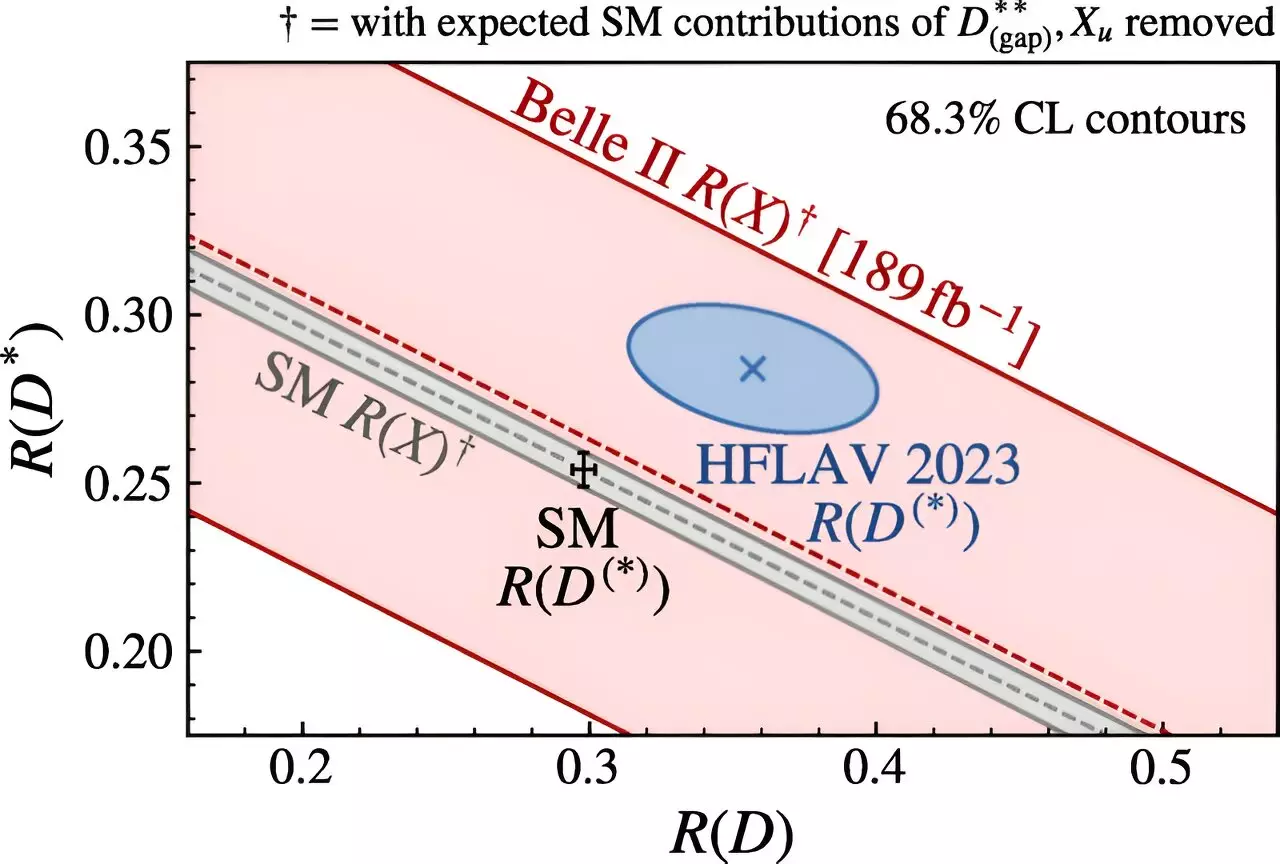The Belle II experiment stands at the forefront of particle physics, serving as a critical endeavor to deepen our understanding of the universe through precise measurements of weak interaction parameters and the exploration of exotic hadrons. Nestled within the facilities of the SuperKEKB particle collider in Tsukuba, Japan, Belle II is not merely observing particle interactions; it is on a mission to challenge and refine our understanding of fundamental physics, particularly the standard model. This model, which has long been a cornerstone of particle physics, proposes that the three charged leptons—electron, muon, and tau—interact uniformly via weak and electromagnetic forces. A deviation from this principle, known as lepton universality, could provide crucial insights into phenomena beyond the current model.
Recent Breakthrough: The Measurement of Tau-to-Light-Lepton Ratio
In a recent publication in *Physical Review Letters*, the Belle II Collaboration revealed their historic measurement of the tau-to-light-lepton ratio, denoted as (mathcal{R}(tau/ell)). This achievement highlights a significant leap in the exploration of lepton universality, responding to long-standing questions and the mysterious discrepancies noted in prior experiments. As articulated by Karim Trabelsi, the spokesperson for the collaboration, any observed violations of lepton universality may point towards new physics—perhaps illuminating pathways to understand interactions that the standard model cannot explain.
What makes this latest measurement especially compelling is its inclusive nature. Unlike previous studies that focused solely on exclusive decays involving charmed mesons, Belle II has broadened its scope. The team aimed to gather direct data without confining themselves to specific hadron types, thereby encompassing a wider array of decay scenarios. This innovative approach is vital in enhancing the precision of measurements, paving the way for a deeper exploration into phenomena that lie outside established theories.
Analyzing the Methodology: Precision through Innovation
The methodological rigor of Belle II is impressive, particularly in how the team tackles challenges regarding particle identification amidst complex interactions. Each experimental trial involves producing pairs of B mesons through electron-positron collisions, with the aim of capturing the elusive behavior of decay products. Trabelsi explains that a detailed reconstruction of B meson events is crucial, as it allows researchers to discern leptons originating from tau decays separately from those produced directly from B mesons—essential for determining the tau-to-light ratio accurately.
The intricacies of this measurement are underscored by the different momentum profiles of leptons resulting from tau decays compared to their counterparts from B meson decays. The team utilized a methodical approach, leveraging distributions related to missing energy to enhance their analysis. While the calibration of background processes can introduce systematic uncertainties, it is also a necessary step towards refining measurements as more data accumulate.
The Path Forward: The Promise of Future Data
The implications of the Belle II measurements extend far beyond immediate results. As the collaboration continues to amass data, there lies an exciting potential for further investigations into lepton universality. Trabelsi emphasizes this, noting that the current findings hold compatibility with both standard model predictions and existing anomalies from prior exclusive decay observations. This duality not only underscores the robustness of the results but also opens avenues for complementary studies that could eventually elucidate instances of lepton-flavor universality violation.
As the experiment progresses, the anticipation surrounding enhanced data collection efforts grows. With each new data set, researchers expect to refine their current findings and potentially unveil new anomalies that could suggest deviations from the standard model. The quest for understanding the fundamental particles of our universe is intrinsically linked to these measurements, fueling both theoretical exploration and experimental rigor within the domain of particle physics.
The Broader Impact: Implications for the Field of Physics
Belle II represents not just a singular experiment, but a pivotal chapter in the ongoing narrative of physics. The possibility that the new measurements could challenge longstanding beliefs about particle interactions generates excitement among physicists worldwide. It instills hope that through innovative experimental approaches, tantalizing glimpses of new physics could emerge—philosophically shifting perspectives on our understanding of the universe.
Ultimately, Belle II’s endeavors reflect an inherent aspect of scientific inquiry: the willingness to question established frameworks and pursue answers to the universe’s most profound mysteries. As the collaboration updates its measures and welcomes new data, the anticipation of discovering whether lepton universality holds true or collapses under scrutiny rises, inviting scholars to dream bigger and explore deeper into the great unknown.


Leave a Reply